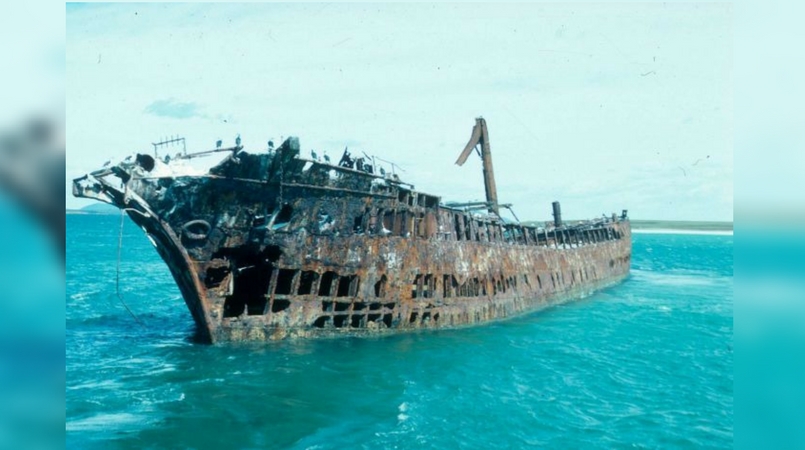
Tasmania's rich maritime history can be seen in the wrecks dotted around almost every treacherous stretch of the coastline, but the Furneaux Group of islands in Bass Strait is especially notorious for leaving vessels in ruin.
The wreck of the trader the Sydney Cove in 1797 put the area on the map — even before British navigator Matthew Flinders charted the islands in 1798.
From then on the local sealing and mutton bird industries boomed, and ships were regularly trading in the area.
The Furneaux Maritime History Association now wants to establish a permanent artefact display near the coast at Lady Barron.
Sixth generation local Gerald Willis grew up fascinated by the shoals and wrecks and is part of the group keen to see more of the area's history on display.
"My father was born on Puncheon Head, which is Cape Barren Island, lived there until he was three, [then] came to Lady Barron," he said.
"Mum's father was a Welshman but her mother, through her side goes back through six generations [of] early settlers on the islands.
Seafarers long troubled by the area
The shipwrecks around the island have always intrigued Mr Willis.
"There's countless wrecks, we've got the shoals to the south-east of Flinders Island called the Pot Boil, which is an area where the sea bottom is sandy, very hard sand, the channels shift and you really need local knowledge to get through them," he said.
"They've been a problem for seafarers for a long time."
Over the years lighthouses were peppered around the islands to aid the safe passage of ships sailing between Europe, South America and the east coast cities of Sydney and Newcastle.
But they could not save the iron barque, Farsund, which was headed to Sydney from La Plata, Argentina, early last century.
"There are still signs of the Farsund, a wreck that went aground in 1912, that's on Cape Barren Island," Mr Willis said.
"It's still there, it's falling to pieces, the stern is falling off, 20 metres or so of the rear has fallen and just gone into the sand, and wiggled its way down towards the centre of the Earth.
"It's a dangerous sort of ship to walk on because there's so much rust — it's just falling to pieces.
"People used to walk on it — I know a guy used to have a barbecue on it years ago — but you wouldn't do that now, I don't think!
Farsund figurehead hoped to feature in museum
In 2012, the association held a gathering to mark the centenary of the grounding and reacquired the unusual figurehead which had graced the bow of the ship.
"It's a male, a naked male with a deer skin slung across his shoulder, it's called the Caradog, which is a [medieval] Welsh name," Mr Willis said.
"Our intention is to use that figurehead as part of a central display for a permanent exhibition to be set up in Lady Barron, based on the Farsund but also based on much of the small vessels that traded between all the islands in the Furneaux Group.
"There's a big history of boat building, of maintaining the boats, the early history of seal harvesting and we're trying to set up a museum that will cover those aspects of our past."
But the museum is a slow work in progress. Mr Willis said the association was struggling to secure a building to house the collection.
"Once you can get bricks and mortar, you can get the funding [for curating]," he said.
"We may need to lease land to build a museum."
Mr Willis is optimistic a museum would draw visitors to the region.
"There's not much to do [in the area] — there's the beach, the coast and some walks — but this would help keep people here an hour or two longer," he said.
